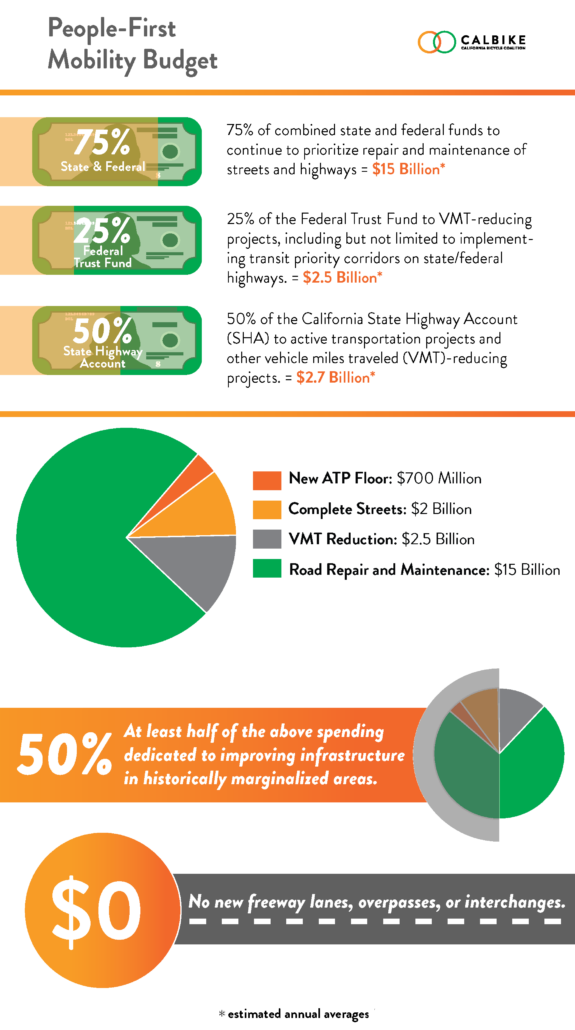Don’t Believe the Myths About VMT Mitigation
Recently, Big Highway — the companies that profit off expanding highways and driving California to climate ruin — spread misinformation about vehicle miles traveled (VMT) mitigation requirements driving up the cost of freeway building. So ClimatePlan, a consortium of advocacy groups of which CalBike is a member, created a fact sheet to dispel the VMT myths and set the record straight about mitigation costs and benefits. Please take a walk deep into the weeds with us as we nerd out on a proposed VMT mitigation bank and the costs of road building, both financial and societal.
VMT explained
We can’t explain VMT any better than the ClimatePlan fact sheet. Here’s their basic explanation:
“Vehicle miles traveled” (VMT) is a measure of driving.
- One vehicle driving one mile = 1 vehicle mile traveled, or 1 VMT
- One vehicle driving two miles or two vehicles each driving 1 mile = 2 VMT
Read the fact sheet for more details on VMT.
Why does CalBike care about VMT?
The transportation sector is responsible for about half the greenhouse gas emissions in California, so getting people to drive less is one of the more effective ways to combat climate change. VMT affects pollution levels, which impact people biking and walking. And VMT affects quality of life. CalBike’s mission is to create livable neighborhoods where people can get where they need to go safely with a variety of transportation options. Transportation deserts, where people are forced into a car to get anywhere, are bad for communities and health.
VMT mitigation funding can be used for biking and walking infrastructure improvements, so California’s commitment to reducing VMT can support our mission of gaining more funding for active transportation projects. A proposal to create a VMT mitigation bank to collect and dispense funds to transit-oriented development projects that reduce VMT would also include funding for improved active transportation infrastructure adjacent to those projects.
What about EVs?
Electric cars and trucks solve some but not all of the issues with VMT. Projects that add highway lanes induce more driving and don’t solve the congestion problem that initiated the project in the first place. More cars on the road, whether powered by fossil fuels or electricity, means more time spent driving for those in the cars; importantly, it also means more exposure to collisions for vulnerable road users traveling on shared roadways. Plus, we can’t make the transition to electric vehicles quickly enough to prevent the worst impacts of climate chaos.
The bottom line is this: we drove ourselves into a world of extreme temperatures, extreme inequality, and extremely poor health. We can’t drive ourselves out of it — we’ll have to take the train, walk, or bike.
What California invests in grows. If we keep investing in new highway lanes, driving, pollution, and VMT will keep increasing. If we instead invest more in connected, projected bike networks, quick-build safety projects, transit priority lanes, and other projects that expand access to sustainable transportation, we’ll start to make a meaningful shift away from clogged freeways and toward a future full of bicycles.


